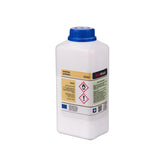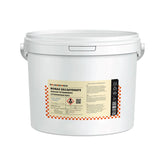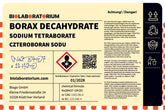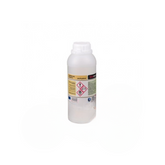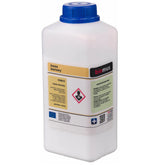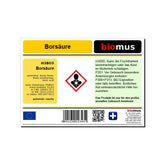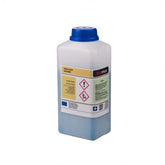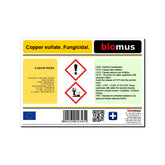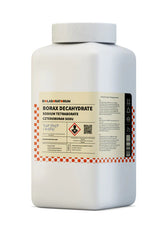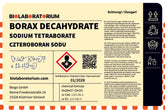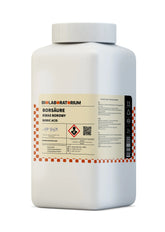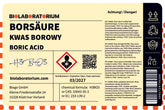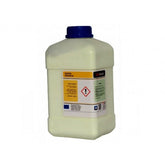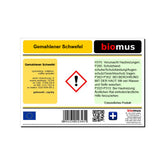Sodium Hypochlorite: Versatile Applications and Important Safety Aspects
Sodium hypochlorite, also known as bleach or chlorine bleach, is a chemical compound used in many areas of daily life and industry. In this blog post, we will take a closer look at the properties, applications, and safety aspects of sodium hypochlorite.
What is sodium hypochlorite?
Sodium hypochlorite (NaOCl) is an inorganic chemical compound composed of sodium (Na) and hypochlorite (OCl-). It is a colorless to yellowish liquid with a characteristic chlorine odor. Sodium hypochlorite is a strong oxidizing agent and is used in many application areas due to its disinfecting and bleaching properties.
Properties of sodium hypochlorite
Sodium hypochlorite is a highly reactive substance that readily reacts with other materials. Some important properties of sodium hypochlorite are:
Oxidizing power
Sodium hypochlorite is a strong oxidizing agent capable of destroying organic compounds and microorganisms. This property makes it an effective disinfectant.
Bleaching effect
Due to its oxidizing power, sodium hypochlorite can lighten or remove dyes and pigments. Therefore, it is often used as a bleaching agent.
pH dependence
The properties of sodium hypochlorite are highly dependent on pH. At low pH (acidic), chlorine gas is released, while at higher pH (basic), hypochlorous acid (HOCl) dominates.
Instability
Sodium hypochlorite is a relatively unstable compound that can decompose during storage, heating, or contact with acids. This can release dangerous gases such as chlorine.
Industrial applications of sodium hypochlorite
Due to its versatile properties, sodium hypochlorite is used in numerous industrial sectors:
Water treatment
Sodium hypochlorite is commonly used for disinfecting and sterilizing drinking, swimming, and wastewater. It kills bacteria, viruses, and other microorganisms.
Food Industry
In the food industry, sodium hypochlorite is used for cleaning and disinfecting surfaces, equipment, and packaging to prevent contamination.
Textile Processing
Sodium hypochlorite is used in the bleaching and decolorizing of textiles. It effectively removes stains and discolorations.
Chemical Industry
In the chemical industry, sodium hypochlorite serves as a starting material for the production of other chlorine compounds and oxidizing agents.
Household Cleaning
In households, sodium hypochlorite is used in cleaning agents such as bleaches, descalers, and disinfectants.
Safety Aspects of Using Sodium Hypochlorite
Although sodium hypochlorite is versatile, caution must be exercised during handling as it can be harmful to health:
Health Risks
Sodium hypochlorite can cause irritation and chemical burns upon contact with skin or eyes. Inhalation of its vapors can damage the respiratory tract.
Chemical Reactions
Sodium hypochlorite reacts with many other chemicals, such as acids or ammonia, forming toxic gases like chlorine. Therefore, it must be stored and used separately from other substances.
Storage and Transport
Sodium hypochlorite solutions must be stored protected from light, heat, and acids, as decomposition may otherwise occur. During transport, the applicable hazardous materials regulations must be observed.
Disposal
Residual sodium hypochlorite solutions must be disposed of properly, as they are considered special waste. Disposal via the sewage system is not permitted.
Conclusion
Sodium hypochlorite is a versatile chemical compound used in numerous industrial sectors due to its disinfecting and bleaching properties. However, caution must always be exercised when handling sodium hypochlorite, as it can be harmful to health and may react dangerously with other chemicals. By observing safety regulations and proper application, sodium hypochlorite can be used safely and effectively.
